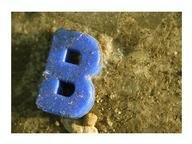Quiz Answer Key and Fun Facts
1. Which capital city, starting with "B," is known for its historic landmarks such as the Brandenburg Gate and its role during the Cold War?
2. Which holiday, starting with "B," occurs the day after Christmas and traditionally involves giving gifts to workers and the less fortunate?
3. What event, associated with the letter "B," involved colonial protesters dumping a British export product into the harbor in 1773?
4. Which sport, starting with "B," features fast-paced gameplay, slam dunks, and three-pointers?
5. Which "B" composer is known for his symphonies and his deafness?
6. Which B animal is a small parrot native to Australia, known for its vibrant plumage and ability to mimic human speech?
7. Which movie franchise, containing the letter "B," and featuring action-packed car chases and spy drama, was based on books by Ian Fleming?
8. Which "B" particle, discovered by Henri Becquerel, is a key element in radiation studies?
9. Which tropical fruit, starting with "B," is often curved and rich in potassium?
10. Which language, starting with "B," is the second-most spoken in India?
Source: Author
Tarkowski
This quiz was reviewed by FunTrivia editor
agony before going online.
Any errors found in FunTrivia content are routinely corrected through our feedback system.
